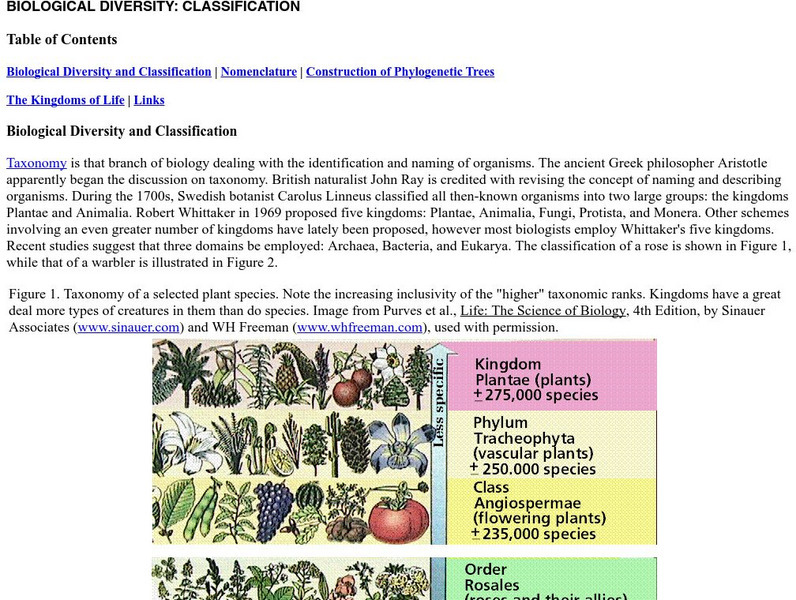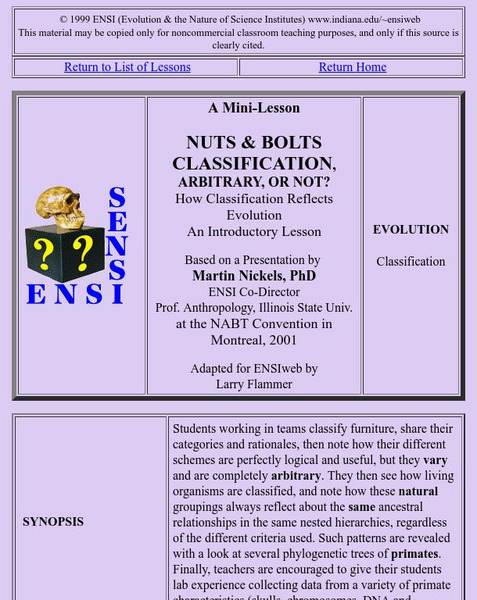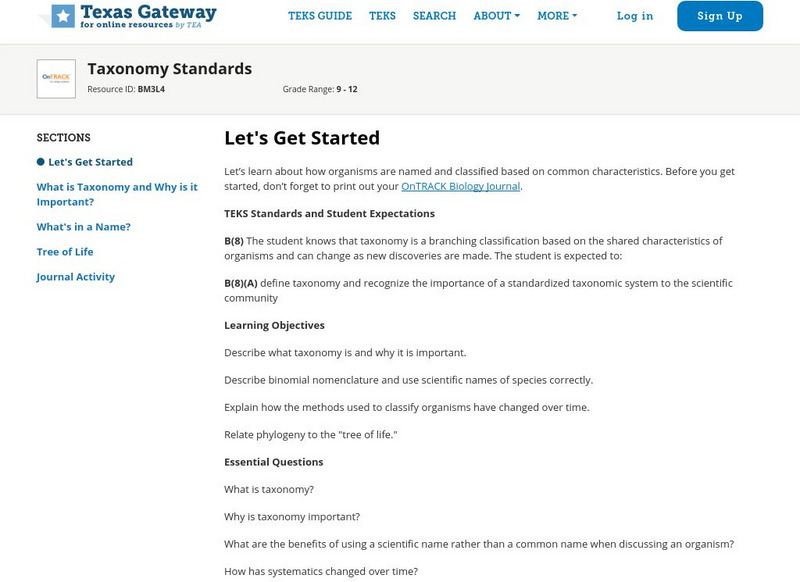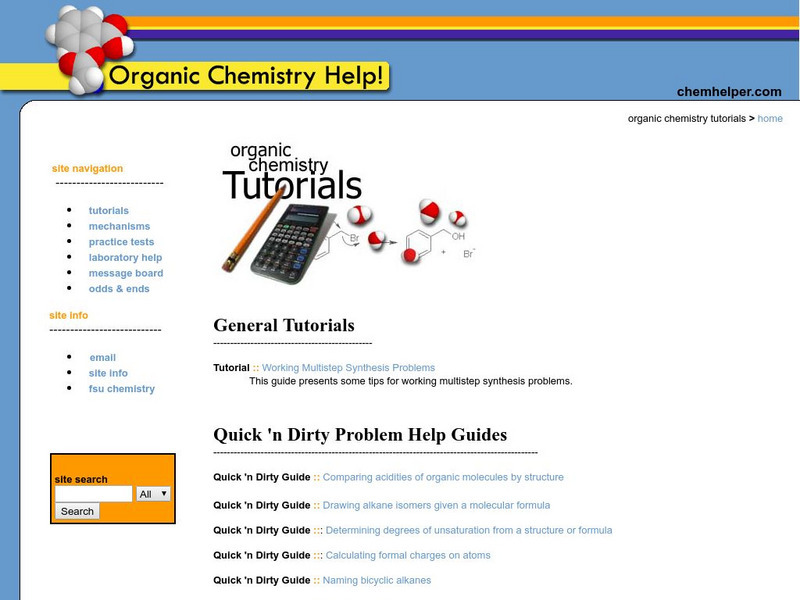Hi, what do you want to do?
Curated OER
Territorial Behavior in Dragonflies and Damselflies
Students explore dragonfiles/damselfiles and their behaviors. They examine their differences and their life cycles. Students observe the dragonflies in a field and determine the number of different species.
Curated OER
Adaptations To the Environment
Middle schoolers design and construct an imaginary animal that is perfectly adapted to a particular type of biome. They give the animal a scientific name, place it in a phylum and write descriptions about its behavior, reproduction,...
Curated OER
The Different Fresh Water Ecosystems
Students summarize the characteristics of an ecosystem. In this biology lesson, students identify five major fresh water ecosystem. They define terms and write a journal about what they learned.
Curated OER
Thanksgiving: Bird Evolution
Students explore the evolution of birds. For this biology lesson, students research articles that discuss evidence about the ancestry of birds. They discuss their findings with the group and draw a journal magazine cover highlighting...
Curated OER
Animals That Fly or Do Not Fly
Students create a chart and classify animals according to if they can or cannot fly. They find and cut out pictures of the animals and glue them in the correct place on the chart.
Curated OER
Species and Spaces - At Risk at Home
Eleventh graders explore and compare Canadian biomes and investigate species at risk. They describe population growth and eco-regions in terms of climate and geography. They research and create presentations about the natural history and...
Curated OER
Bears
Students complete a variety of bear-related activities. They sort and graph teddy bears, distinguish between real and non-real bears and research bear life cycles and habitats.
Curated OER
Introduction To Pests
Students investigate common pests and match pests to their respective pictures. In a group discussion, students explore the basic needs of pests and share personal pest stories. They examine common self-protection measures. Using the...
Curated OER
Investigating Animals in Water
Young scholars observe small animal activity. They identify local water animals and describe the habitats where water animals can be found. Students collect samples to observe in the classroom.
Curated OER
Classifying Resources
Students discuss the difference between the three types of productive resources. In groups, they classify and organize examples into the correct category on a chart. As a class, they discuss how each type is used in the production of a...
Curated OER
Aphids and Ladybirds
Students record observations of ladybird beetles and aphids. They develop questions concerning the behavior of ladybird beetles and aphids that are testable by a classroom experimentation. Students develop an investigation.
Curated OER
Salmon Smolt: Stella PC and Mac
Students investigate the Stella Smolts Migration Model and its use in previous simulation models to help managers deal with the many factors contributing smolts decline. They participate in an interactive exercise in the role of fishery...
Curated OER
Stream Gages and GIS
students interpret recent regional-scale climate events based on current stream flow, monitor changes in time, and to consider additional interpretations that could be derived if other data were in map form.
Curated OER
Periodic Table
Students relate to the idea of periodicity & give example of other periodic events and identify and use the periodic table as a useful resource. They also identify the relationship of elements to certain groups & periods &...
Curated OER
Bacterial Roles
Students study bacteria and the role it plays in the ecosystem. In this bacteria instructional activity students research the roles bacteria has and submit a chart.
Curated OER
Halloween: Arachnids
Students participate in class discussion about the movie Arachnophobia. In this biology instructional activity, students find articles and photos of a species that interest them. They share it with their group.
Curated OER
Charles Darwin's Hardware Shop
Students construct an evolutionary tree representing specialization, diversity, and selection using easily obtained materials. They use at least twenty pieces of hardware to classify then develop "evolutionary" relationships between the...
Estrella Mountain Community College
Estrella Mountain College: Classification
Discusses many aspects of information pertainingto organism classification. Provides links to other areas in biology as well.
Indiana University
Is Classification Arbitrary or Not?
Students transition from classifying furniture to an understanding of classification of living organisms in this thorough lesson plan site.
Georgia Department of Education
Ga Virtual Learning: Biology: Taxonomy
In this multi-media module students derive the relationship between single-celled and multi-celled organisms and the increasing complexity of systems.
Texas Education Agency
Texas Gateway: Taxonomy Standards
What's in a name? Learn about how organisms are named and organized in this interactive tutorial.
Vision Learning
Visionlearning: Biology: Taxonomy Ii: Ruling Names of Giants
Instructional module focusing on binomial nomenclature. Discussion includes Carolus Linnaeus' taxonomic classification system for naming all species. Site also includes an interactive practice quiz and links relating to the topic.
Other
Frostburg State University: Organic Chemistry Tutorials
This site features tutorials on alkenes, alkanes, alkynes, alcohols, carboxylic acids, amines, ketones, aldehydes, and benzene. The tutorials lists the properties of each, structure and classification, the nomenclature, and gives...




























